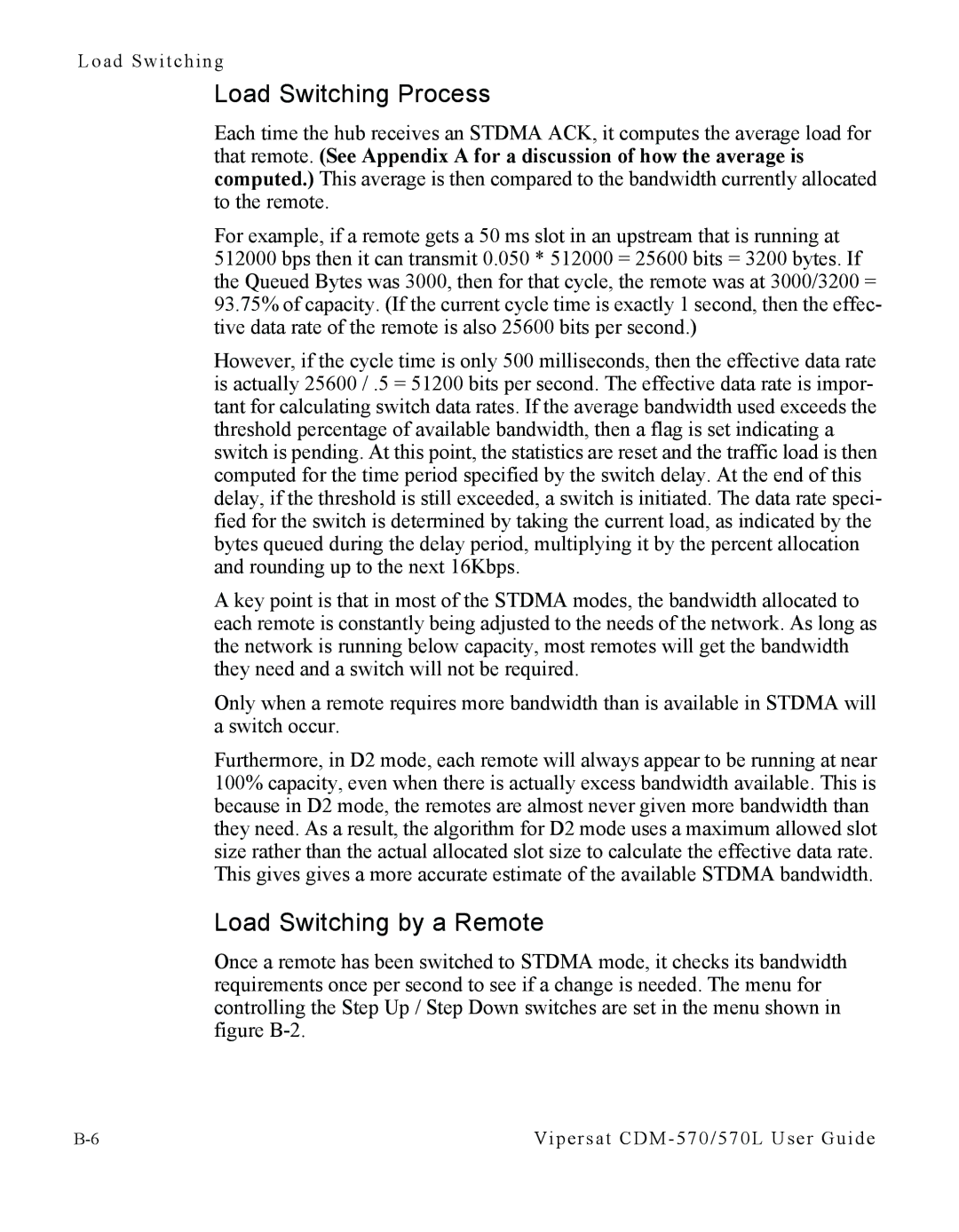Load Switching
Load Switching Process
Each time the hub receives an STDMA ACK, it computes the average load for that remote. (See Appendix A for a discussion of how the average is computed.) This average is then compared to the bandwidth currently allocated to the remote.
For example, if a remote gets a 50 ms slot in an upstream that is running at 512000 bps then it can transmit 0.050 * 512000 = 25600 bits = 3200 bytes. If the Queued Bytes was 3000, then for that cycle, the remote was at 3000/3200 = 93.75% of capacity. (If the current cycle time is exactly 1 second, then the effec- tive data rate of the remote is also 25600 bits per second.)
However, if the cycle time is only 500 milliseconds, then the effective data rate is actually 25600 / .5 = 51200 bits per second. The effective data rate is impor- tant for calculating switch data rates. If the average bandwidth used exceeds the threshold percentage of available bandwidth, then a flag is set indicating a switch is pending. At this point, the statistics are reset and the traffic load is then computed for the time period specified by the switch delay. At the end of this delay, if the threshold is still exceeded, a switch is initiated. The data rate speci- fied for the switch is determined by taking the current load, as indicated by the bytes queued during the delay period, multiplying it by the percent allocation and rounding up to the next 16Kbps.
A key point is that in most of the STDMA modes, the bandwidth allocated to each remote is constantly being adjusted to the needs of the network. As long as the network is running below capacity, most remotes will get the bandwidth they need and a switch will not be required.
Only when a remote requires more bandwidth than is available in STDMA will a switch occur.
Furthermore, in D2 mode, each remote will always appear to be running at near 100% capacity, even when there is actually excess bandwidth available. This is because in D2 mode, the remotes are almost never given more bandwidth than they need. As a result, the algorithm for D2 mode uses a maximum allowed slot size rather than the actual allocated slot size to calculate the effective data rate. This gives gives a more accurate estimate of the available STDMA bandwidth.
Load Switching by a Remote
Once a remote has been switched to STDMA mode, it checks its bandwidth requirements once per second to see if a change is needed. The menu for controlling the Step Up / Step Down switches are set in the menu shown in figure
Vipersat |
